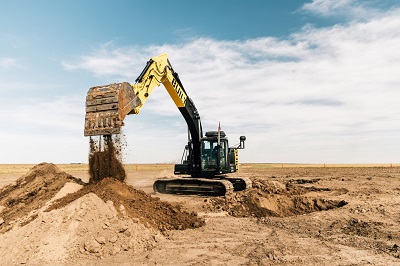 Sunday, May 5, 2024
Sunday, May 5, 2024  Sunday, May 5, 2024
Sunday, May 5, 2024 
As blogged on TechCrunch.com, I’ve never had a meeting quite like the one I had with Built Robotics.
Within about 10 minutes of meeting Built’s co-founder Noah Ready-Campbell, we’re steering an 80,000-pound construction excavator around what is basically his company’s back yard.
He wants me to see what it’s like to drive one; how much skill and finesse it takes to safely and efficiently move mountains of dirt around with this massive machine. The answer? Lots.
That’s why his company wants these machines to drive themselves.
Built is taking the concepts and technology that others are using to build self-driving cars and adapting them for a whole different vertical: construction.
They’ve built a kit that retrofits existing construction equipment with hardware like lidar, GPS and Wi-Fi, giving it the ability to autonomously map and navigate its surroundings. Rather than trying to build its own dozers and excavators and fight its way into an already dominated market, Built is aiming to make a kit that works across the popular equipment already out on job sites. They sell and rent the kits to companies, then charge a usage fee whenever the machine is working in its autonomous mode.
They showed this tech at a smaller scale for the first time in 2017, implementing it into the compact track loader pictured above. Now it’s expanding into bigger equipment, including dozers (pictured below) and excavators (pictured up top). See those black boxes on top of each vehicle? That’s where all of Built’s tech lives.
Back in their office, we look out at the machines in their lot. Noah and the Built team switch the excavator into automated mode, bringing up a map of what’s just outside the window. A red border tells the machine where it’s allowed to go; if it for any reason edges past those borders, the whole machine shuts down.
Cameras on and around the vehicles are constantly checking for anyone who might stray too close. If something goes wrong and the machine starts to tip too much, or if on-board sensors detect that something is in the way underground? Power gets cut. And there’s a big red emergency stop button on the back of each machine (and a wireless button meant to stay on the operator’s desk) for good measure.
Keep reading this blog on TechCrunch.com
Watch the video and learn more about Construction Links Network – the peer-to-peer network sharing platform for the construction, building and design community.
Ideal for YOUR Press Releases | Project Updates | New Appointments | Awards & Milestones | Company News | New Products/Services | Brochures | Videos | Infographics | Blog Sharing | Events and More